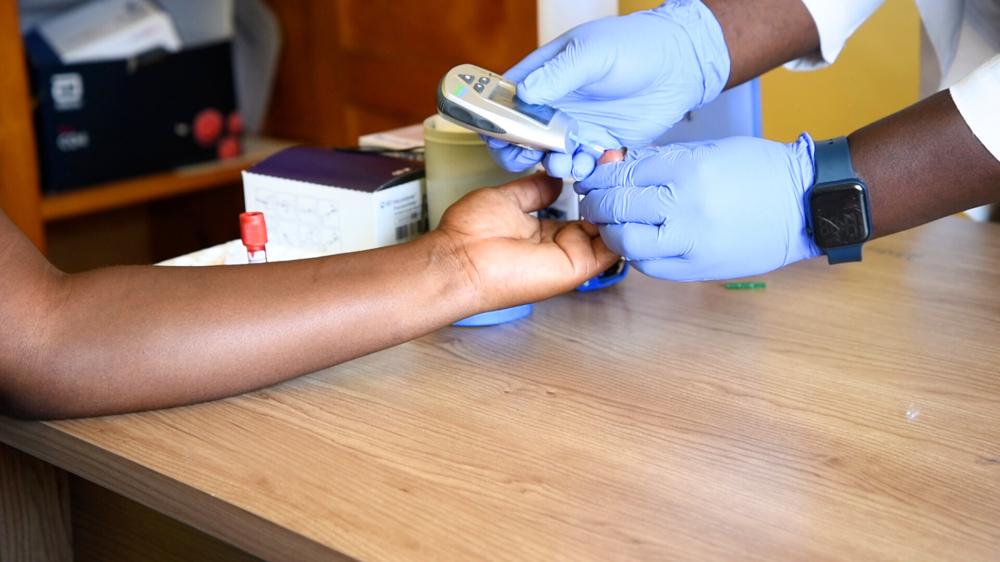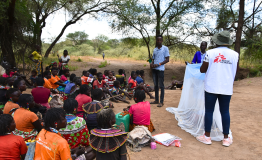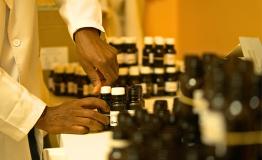Non-communicable diseases (NCDs), like diabetes, hypertension, asthma, epilepsy, and Chronic Obstructive Pulmonary Disease, among others, account for up to 39 in every 100 deaths in Kenya. In 2019 an internal review in the inpatient department at the Homa Bay County Teaching and Referral Hospital, showed that 1 in every 5 deaths occurred from a chronic disease condition or its complication. Among patients with chronic diseases, 4 in every 10 deaths occurred in the first 24 hours of admission.
Following these findings, in 2021 MSF implemented a decentralized, simplified model of care for chronic diseases in two health facilities in the Homa Bay sub-county, to reduce deaths and complications associated with chronic diseases, which enables the patients to be treated for their disease in smaller-level health facilities closer to where they live. This decentralization of care also includes an established referral framework for a continuum of care from these health facilities to the Homa Bay referral hospital while supporting a differentiated service delivery (DSD) model of care. Since 2023, MSF in partnership with the Ministry of Health has been piloting this new model of service delivery for patients with NCDs in Nyalkinyi and Marindi health facilities.
The pioneered differentiated service delivery model approach is patient-centred and responsive to patient needs for the treatment of NCDs. This model focuses on tailored care for stable diabetic and hypertensive patients, supported at the facility or in the community depending on patients’ preferences.
A sunny Tuesday morning and the Nyalkinyi public healthcare facility already has patients streaming into the waiting bay. It is a clinic day for patients with diabetes and hypertension. At 9 am Samuel Bele, one of the community health promoters’ voice echoes. “You see,” he points at the flipchart, "with a good diet and a reduction of sugar in our food, we can manage diabetes and hypertension. Vegetables, fish, milk, sweet potatoes, and maize are the foods we should maintain in our diets.” Samuel has just begun today's health education session.
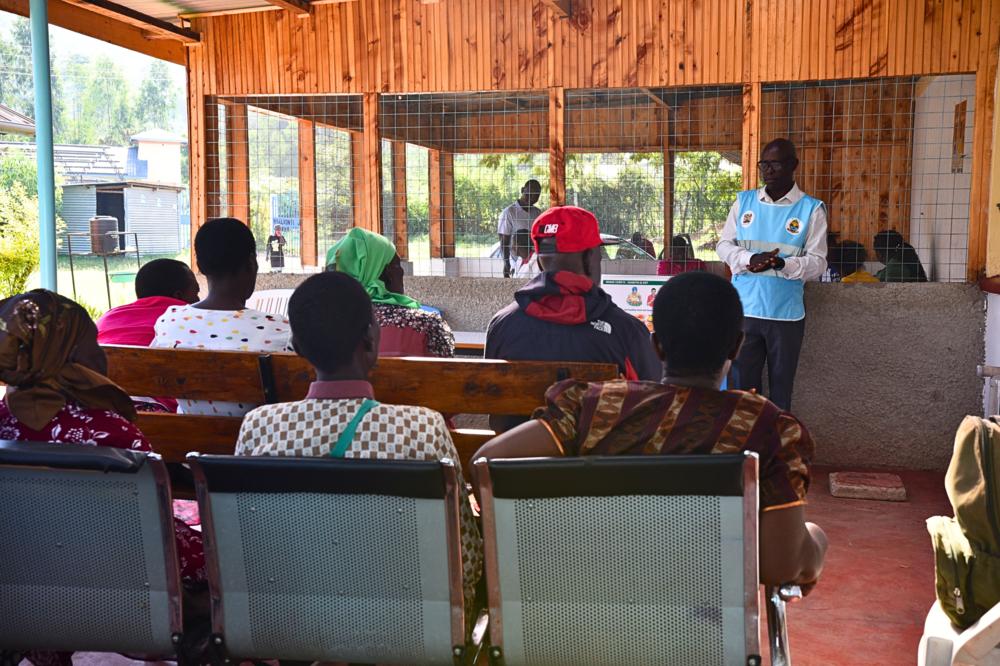
"The differentiated service delivery model uses simplified protocols and empowers a patient in self-management of chronic diseases by improving their understanding of the disease. It enhances access to care and efficacy for patients, as it reduces the cost and time barrier to access through reduced frequency of hospital visits, improving adherence to treatment. ” Explains Dr. Ebenezer Ngwakwe, MSF medical team leader in Homa Bay. “Quality of care is also improved due to reduced workload, enabling clinicians to give more focus to unstable patients. Stable patients are given three months' appointment after patient support, education, and counselling. They can still come to the facility in case of any health concerns within the three months”
The differentiated service delivery models are group based and individual based, according to a patient’s preference. To be enrolled into this model, patients are first explained to the options. “Unstable patients are not eligible for this model of care, as they need close follow ups, either monthly, or biweekly by a clinician. This is different for stable patients.” Dr Ngwakwe adds.
The standard care option is a default schedule for all stable patients, where individual patients come every three months but are seen by a nurse in the clinic for a full consultation. In the fast-track model, the patient goes straight to the pharmacy for medication and receives health education. They are referred to a nurse in case of symptoms or health concerns.
Pamela Anyango has been living with hypertension for three years and is a patient advocate. Today, she joins the hospital team to speak to patients forming a facility-based group. “I used to have unexplained hot flashes, fatigue, migraines and would sweat a lot.” She explains. “It was not until a community health promoter told me to go to Nyalkinyi health facility to be examined that I knew that I had hypertension.”
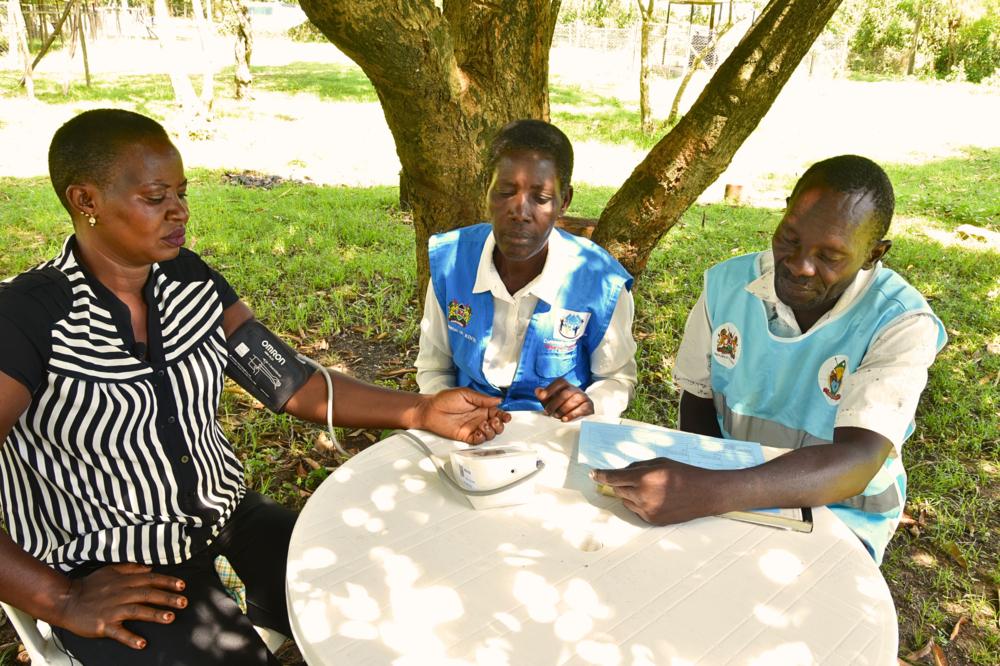
Since implementing the DSD model, 105 patients have been enrolled with ten facility based and two community-based groups formed. Community health promoters lead these groups and are trained in checking the vital signs of the patients, detecting danger signs, educating patients, and dispensing pre-packed medication prepared by the pharmacist. Patients self-select into these groups of between 5 to15 people. Patients receive medication packs, blood pressure screening, symptom checks, a health talk. All this is documented in the DSD card. They meet every 3 months at the facility and in the community at a location of their choice.
"The first activity is health education, where the patients also share their experiences.” Explains Serfine Gwayo, a community health promoter checking each patient’s vital signs. “This is where questions are answered based on the challenges shared. During the facility- based groups, a facility team member like a nurse, joins the groups to respond to certain questions that I cannot answer.”
To ensure continuous monitoring, at 12 months, all patients have their annual visit with a clinician for full consultation. Required blood tests for patients in either facility-based groups or community-based groups are reset from the previous schedule to ensure that all members of the group are scheduled for follow-ups on the same day.
On this clinic day, a new facility-based patient group has just been formed. This group also forms a support system through shared experiences for these patients, now connected by a common goal.
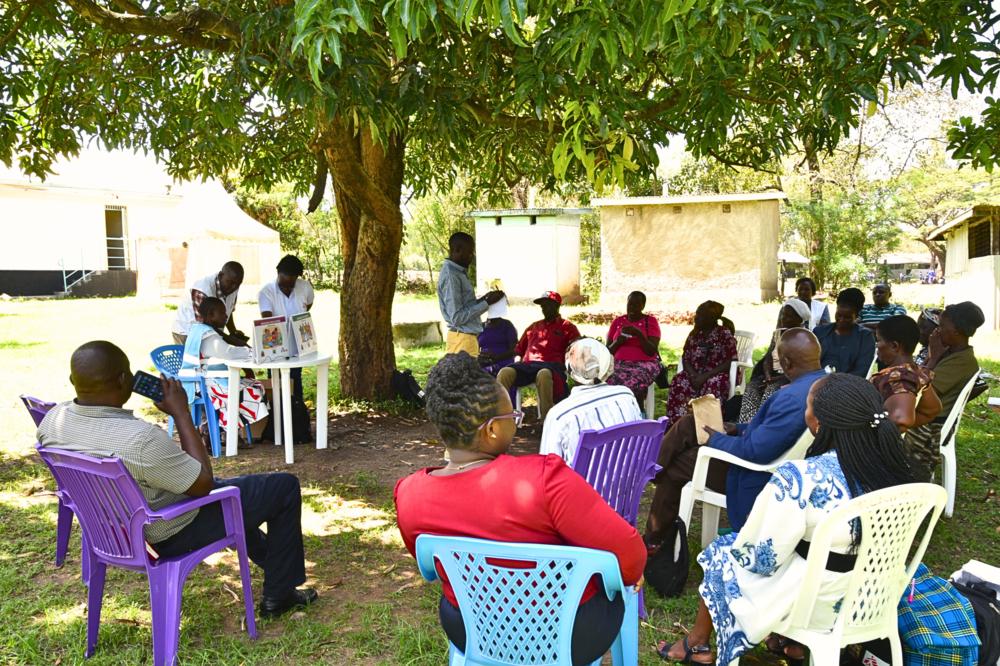
----------------------------
About MSF in Homa Bay
Our teams deliver care in collaboration with the Homa Bay county ministry of health at the adult medical wards including tuberculosis (TB) wards. They also provide post-discharge treatment and follow-up care for unstable patients from the inpatient wards with chronic diseases including treatment for Kaposi Sarcoma.
